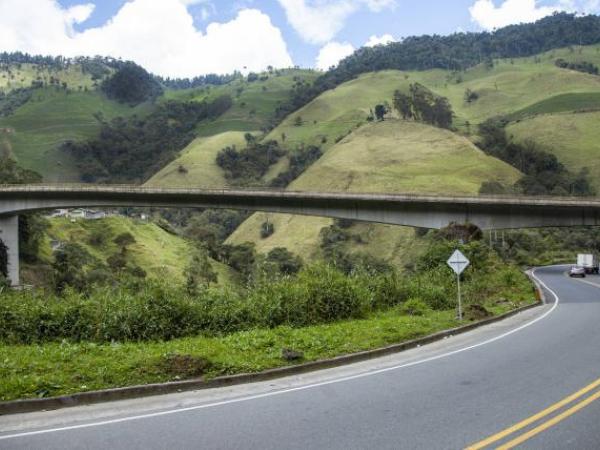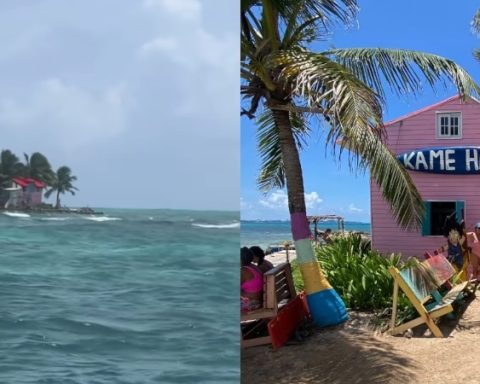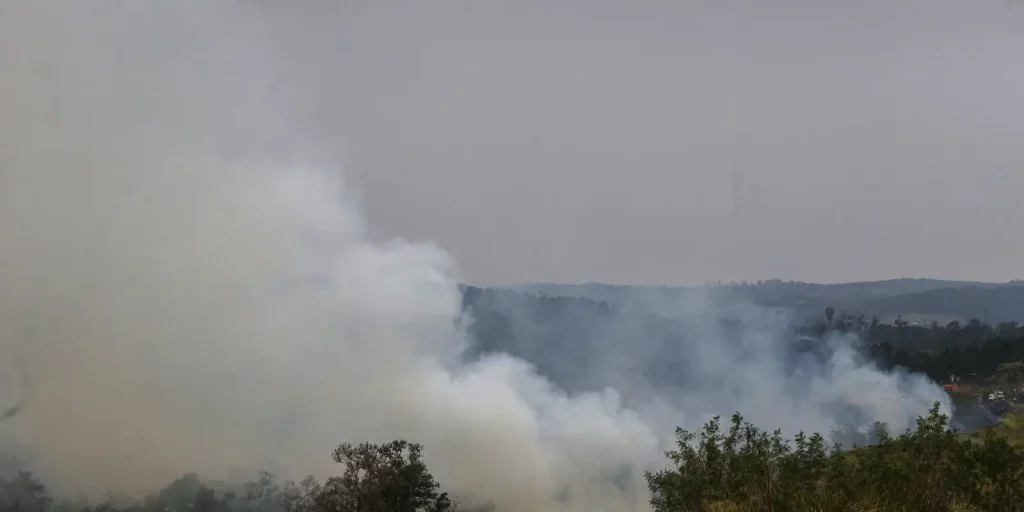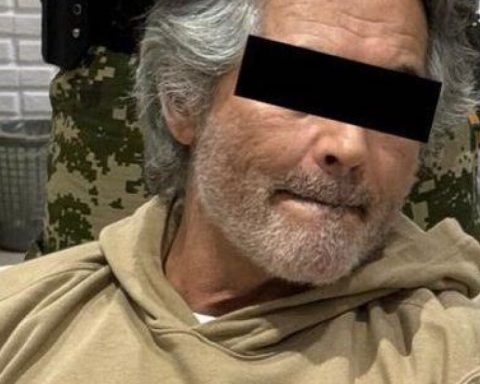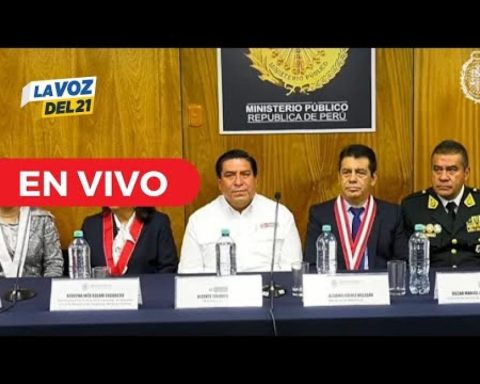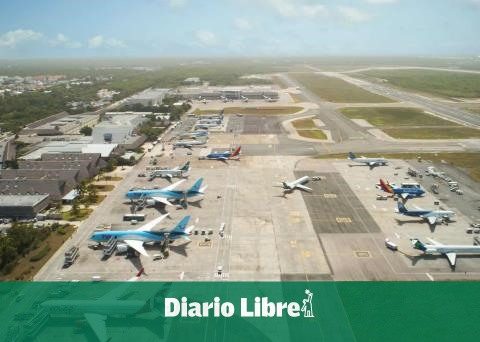The Ministry of Transport is looking for ways to find liquidity to continue working on improving the country’s infrastructure. In line with this purpose, the National Roads Institute (Invías) has taken a leading role not only for its work on national and regional roads, which are the network under its responsibility, but because it will be one of the actors in charge of the collection of property value added tax.
In an interview with Portafolio, Juan Carlos Montenegro, the new director of Invías, spoke about the collection schedule, the plan that the entity has on regional roads, when Invir will officially begin to operate and assured that it will hand over the kilometer 58 viaduct to the ANI.
Also read: The Ministry of Transport submitted the railway bill for the second time: what changes did it make?
How are you progressing on the projects you are in charge of?
Invías currently has 10,200 kilometers of the primary national network, and the National Infrastructure Agency (ANI) operates 8,200 through road concessionaires. The difference is in the way we contract to carry out works.
On the other hand, Invías also has 27,000 kilometers of tertiary network, which was received from what was once called local roads, and we are in charge of the country’s river infrastructure in terms of docks and the maintenance of circulation channels, with dredging, cleaning and other things for navigability in the rivers, except for the Magdalena.
In terms of railways, Invías has the network that does not operate, that is, there is no operation on the railway tracks. The operation is established by ANI with concession contracts. We are in charge of the existing track and the stations that are cultural heritage, which we maintain and restore, such as, for example, the Honda station, among others.
And regarding Invir, what has happened with this project that was supposed to start in July?
It is the entity created by the National Government to take charge of the regional or tertiary roads and some secondary roads, which are currently the responsibility of the Nation, not the departments or municipalities, who are directly responsible for these roads. Invir, just as Invías does today, will support this function in the departments and municipalities and will be in charge of those 27,000 kilometers of tertiary network that we have.
Although this entity has already been created, the Ministry of Transport is finalizing its structuring, which is expected to be completed in the second half of the year. The number of positions to be assigned is being defined, which will depend on the number of projects to be worked on.
This situation is directly related to the availability of the budget to enable its activation. We are waiting for the budget discussions, so that the Ministry of Transport can identify the amount to be allocated to start operations. Until this happens, the tertiary network will remain in the hands of Invías, such as the Community Roads for Total Peace.
There are still several steps to be taken. When do you expect it to be operational? 2025?
It is a decision that depends directly on the Ministry of Transport as the head of the sector. We are ready to transfer the responsibilities of the new projects when the entity becomes active. The projects that we are currently executing will continue in Invías and will end in Invías. It makes no sense for a new entity to receive an execution load that is under construction or about to be finished. It takes us longer to deliver than to finish the project, that is why it is done this way.
Regarding its start, I understand that Invir should be up and running this year, but it will depend on resources.
Also read: Invías awarded contract to recover km 85 of the Cartagena – Barranquilla highway
Regarding the budget, the possibility of a tighter investment budget is being reviewed. How do you plan to prioritize the entity’s projects?
We managed to adjust to this year’s budget cuts with $100 billion less in Invías. We are left with $4.2 billion in cash, of which the majority ($3.2 billion) corresponds to future terms, that is, a commitment from the Government, and the surplus billion is allocated to new projects.
We will do the same in 2025, when we have even fewer resources, $3.4 trillion, of which $2.3 trillion will be for future periods, leaving us with $1.1 trillion flexible to allocate. It is a difficult condition, because the needs we have identified for 2025 are in the order of $9 trillion.
Which other government projects consume a large part of this resource?
Legality, Conclude and conclude, Reactivation 2.0, Rural Colombia which ends this year, because there is no budget allocation for 2025, are already ending.
Other projects were signed between 2021 and 2022 and are valid until 2030. For these, we are processing with the Ministry of Transport, the DNP and the Ministry of Finance, an advance of the future terms, that is, to bring resources that are projected for the following years to the present, in 2025 and 2026, to advance them. The communities expect to see the paved roads, not the previous works, so it is an alternative to advance the construction and for the communities to see that the resources are being invested.
What needs to happen for it to become a reality?
Two conditions must be taken into account. First, the medium-term fiscal framework must allow the incorporation of these resources, because each period has a maximum limit of resources, so it must be ensured that the quota is met. Second, the increase in the contract amount, that is, verifying that the contractor has the technical capacity to carry out the activities. There is no point in bringing in resources if the contractor cannot carry out the work.
The idea is to sit down with the communities, see their current needs and move forward accordingly and get the paving going.
In which projects is this mechanism planned to be used?
There we have 21 projects, for example, Los Curos – Málaga, Zipaquirá – Ubaté- Ubaté – Barbosa- Bucaramanga, the route to the commoners, La Lejía – Saravena, Puerto Boyacá – Otanche – Tunja, and the others that make up the bicentennial pact. There, the Governors and the Government made an alliance that will allow us to allocate resources of $4.3 billion, of which $3.2 billion are contributed by the Nation for different terms and $1.1 billion is the responsibility of the five concessions.
There are also other projects in Alta Guajira, Villa Garzón – San José de Fragua, Puerto Gaitán and other projects.
You may be interested in: The ANI awarded the administration of the Pacific railway corridor and is advancing in designs
You were sending
You were sending
Regarding Community Roads, it was expected to invest $8 billion in four years in this type of work. How is the allocation of resources and the progress of the work going?
That’s right. The program has an estimated $8 billion, but with the actual allocation from the Government and Congress, in 2023 and 2024, it shows that to date nearly $600 billion has been invested.
This received around 29,000 applications in a first phase, of which 1,034 agreements were assigned to 29 departments, with this agreements being signed for November 2023. These projects began to be executed in January 2024. To date, we are reaching 500 community roads executed under this program in which an average of $200 million is invested in each one.
In the second stage, 1,100 agreements have been signed and their intervention will begin in December. We plan to invest $100,000 million and $150,000 million for the period 2025, which will allow us to sign 70 agreements according to the applications we receive.
The goal is ambitious, 33,000 kilometers of transit, but we depend directly on the budget allocation. However, we consider it a successful plan.
Regarding the controversy over Pacific 1, where they hope to intervene in a section to connect the Pacifics, what has happened with that section?
There is a pending situation with land for the construction of the dual carriageway and some studies and designs that are pending completion to carry out this intervention. It is a 1 kilometer stretch and is in this phase due to the problems that were had with a previous contractor.
On the other hand, there is an issue in the eye of the storm and that is the property valuation. You will be in charge of this collection, how will it work and the allocation of resources?
Within the property valuation scheme, which is not new, Invías is the active subject, that is, the one in charge of collecting the valuation, but we are not the only ones; in the most recent modification it says that ANI and Aerocivil, as State entities, are also active subjects for collecting the valuation.
The idea is to identify which properties will benefit from the construction of this infrastructure depending on their proximity to it, the conditions of the property and the payment capacity of the owner, and then the charge will begin to be made based on the commercial appraisal.
The distribution of receipts will begin in November so that they can be reviewed and given their opinion. The actual collection will begin in March.
What will determine whether or not an entity collects the money?
Depending on who generated the project, except for this first one in which the collection will be in the hands of Invías.
Read also: Vinci Highways awaits conditions to enter into new projects

Toll managed by Invías
Courtesy
After a few months in office, what challenges do you see?
As an engineer, and looking at the situation in the sector, the main challenge is to change our mindset a little, since we not only build, but also operate and maintain roads, and there is a fundamental component in this: road safety, and there is a lot to be strengthened. It is a personal challenge.
On the other hand, the entity has the challenge of executing the budget. Our goal is to reach 95% of the commitments, which will allow us to assign the resources we receive to all contractors and for them to advance to show the communities that ‘we are not stealing our money’, that our contractors work here.
Another challenge is to put kilometer 58 of the Bogotá – Villavicencio highway into service, which we hope will be in December, around the fifth or tenth. This follows an intervention of a year and a half.
In addition, finishing 25 river roads in the deep Colombia, structures a plan for continuity of the works for 2025 and continuing with the Community Roads.
Regarding kilometer 58, is the idea to operate it or hand it over to the ANI?
No. The idea is to give it to the ANI since it is a concessioned section. We carry out the works that Invías does to address critical points that are not contractually the responsibility of the concessionaire, we give them to the ANI and they give them to the concessionaire so that they are included in the operation and maintenance of the corridor.
But should the dealer accept?
It will depend on the conditions of the ANI and them to operate and maintain.
Paula Galeano Balguera
Portfolio Journalist
